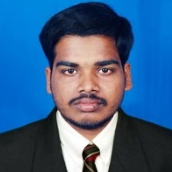
Sivaraj C
Work place: Department of Computer Applications, National Institute of Technology, Tiruchirappalli, 620015, INDIA
E-mail: sivamchinna@gmail.com
Website:
Research Interests: Computer Networks
Biography
Mr. Sivaraj C is a PhD scholar in the Department of Computer Applications at National Institute of Technology (NITT), Tiruchirappalli -15, India. He received MCA degree from Anna University, Tamil Nadu, India. His research interests include the areas of wireless ad-hoc and wireless sensor networks.
Author Articles
Energy-efficient and Load Distributed Clustering Algorithm for Dense Wireless Sensor Networks
By Sivaraj C Alphonse P J A Janakiraman T N
DOI: https://doi.org/10.5815/ijisa.2017.05.05, Pub. Date: 8 May 2017
Wireless sensor networks (WSNs) consist of a large number of tiny sensors with sensing, processing and transmission capabilities. Reducing energy consumption of nodes is one of the major objectives in the design of wireless sensor networks, as sensors have low power batteries. As data collection is the primary objective of WSNs and it consumes more energy, energy-efficient routing is a prominent solution to reduce the sensors energy consumption. This paper proposes an Energy-efficient and Load Distributed Clustering Algorithm (ELDCA) for routing in dense wireless sensor networks to reduce and distribute the sensors’ energy consumption. The network is divided into number of virtual congruent square grids of defined sizes. The algorithm constructs optimal and load balanced clusters at every inner crossing point of grid cells using defined cluster fitness value. As early energy depletion is a major design issue in clustering protocols, the proposed algorithm provides a local substitution for energy suffering clusterheads (CHs). To prove the excellence of the proposed algorithm, extensive simulation experiments are performed under different network scenario. The results are compared with latest routing algorithms in terms of network lifetime, energy dissemination, and energy utilization.
[...] Read more.Other Articles
Subscribe to receive issue release notifications and newsletters from MECS Press journals